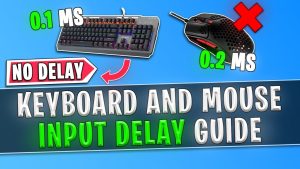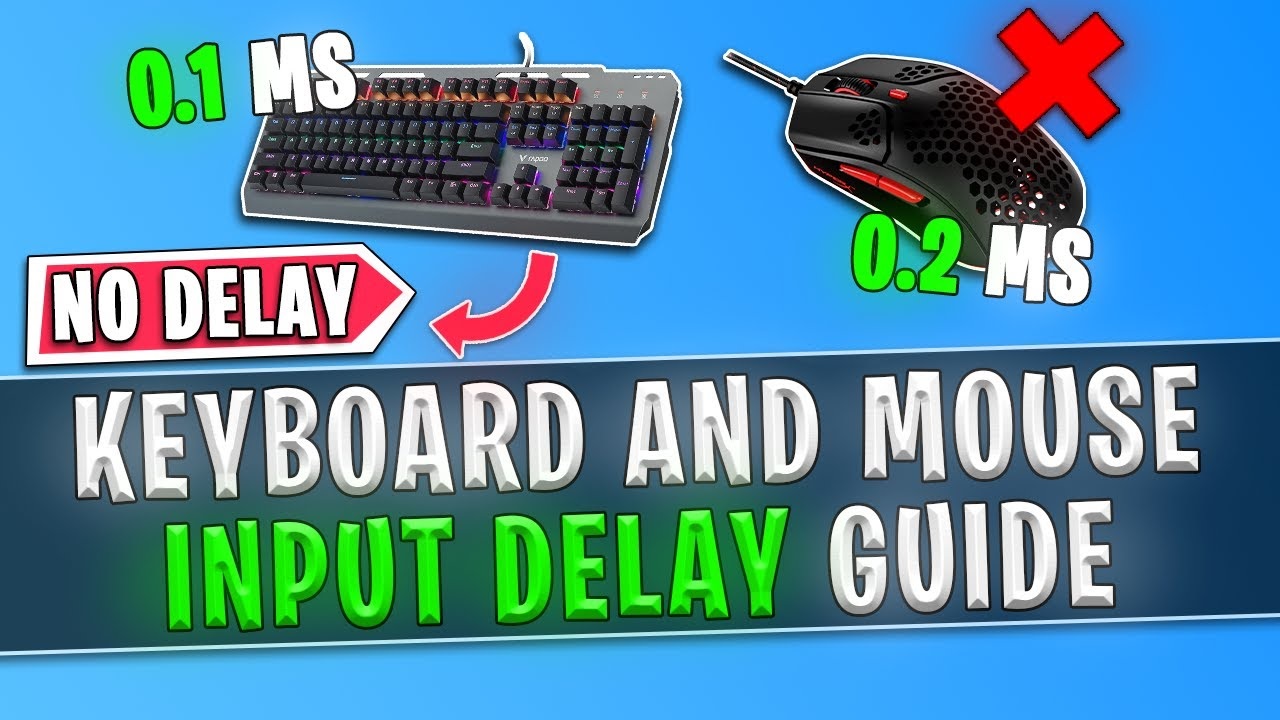Hey there, fellow Windows user! If you’re reading this, chances are you’re slamming your desk in frustration because your keyboard is typing like it’s stuck in molasses, or your mouse is dragging across the screen like it’s on a leisurely stroll. I’ve been there—nothing kills productivity (or a good gaming session) faster than input lag. Whether you’re working on a deadline, editing videos, or just browsing the web, that tiny delay between your actions and the computer’s response can feel like an eternity.
In this guide, I’ll walk you through how to fix keyboard and mouse lag on Windows step by step. We’ll start with the easy stuff that often solves the problem right away, then dive into more advanced tweaks if needed. I’ve kept things straightforward, drawing from my own experiences tinkering with PCs over the years. No tech jargon overload here—just practical advice that works for Windows 10, 11, and even older versions like 8.1. Let’s get your setup running smoothly again!
Understanding Why Keyboard and Mouse Lag Happens
Before we jump into fixes, it’s helpful to know what’s causing the lag. Think of it like diagnosing a car that’s sputtering—you fix it faster when you know if it’s the fuel or the spark plugs.
Keyboard and mouse lag on Windows can stem from a bunch of culprits. Hardware issues, like a faulty USB port or an old mouse, are common. Software-side problems include outdated drivers, conflicting programs, or even Windows updates that didn’t install quite right. If you’re into gaming, high system resource usage from demanding apps can make your inputs feel sluggish. And don’t forget about wireless devices—interference from other gadgets can turn your Bluetooth mouse into a laggy nightmare.
In my case, I once spent hours blaming my keyboard only to realize it was a background antivirus scan hogging CPU. Moral of the story: lag isn’t always what it seems. Now, let’s roll up our sleeves and start fixing.
Quick and Easy Fixes to Try First
Most lag issues can be sorted with basic troubleshooting. These steps take just a few minutes and don’t require any special tools. Start here before going deeper.
- Restart Your Computer (Yes, Really)
I know, it sounds too simple, but restarting often clears temporary glitches. Windows can get bogged down with background processes, and a fresh boot resets everything. Shut down completely—don’t just sleep or hibernate—then power back on. Test your keyboard and mouse right away. If the lag’s gone, great! If not, move on.
- Check Your Connections
For wired devices, unplug and replug your keyboard and mouse into different USB ports. Sometimes, a port goes wonky, especially if it’s USB 2.0 trying to handle a high-speed device. If you’re using a USB hub, bypass it and connect directly to your PC.
Wireless users: Replace batteries if they’re low, and ensure your receiver isn’t buried behind your monitor where signal interference is high. Move closer to the receiver or away from routers, microwaves, or cordless phones that might jam the frequency.
Pro tip from my setup: I switched to a wired mouse for gaming because Bluetooth lag was driving me nuts during fast-paced matches. If you’re a gamer dealing with mouse lag on Windows, this could be your quick win.
- Update Your Drivers
Outdated or corrupted drivers are a top cause of input lag. Windows usually handles this, but sometimes it needs a nudge.
- Right-click the Start button and select Device Manager.
- Expand Keyboards and Mice and other pointing devices.
- Right-click your device, choose Update driver, and select Search automatically for drivers.
If that doesn’t find anything, head to the manufacturer’s website (like Logitech, Razer, or Microsoft) and download the latest drivers manually. For example, if you’ve got a gaming mouse, their software often includes lag-reducing optimizations.
I remember updating my keyboard drivers after a Windows 11 update, and bam—lag vanished. Always restart after installing to let changes take effect.
- Disable Power-Saving Features
Windows loves saving energy, but that can make USB devices lag by putting them to sleep.
- In Device Manager, right-click your keyboard or mouse.
- Go to Properties > Power Management.
- Uncheck Allow the computer to turn off this device to save power.
This keeps your inputs awake and responsive. It’s especially useful for laptops where power management is aggressive.
Digging Deeper: Software Tweaks for Stubborn Lag
If the basics didn’t cut it, let’s tackle software conflicts and system optimizations. These steps might require a bit more time, but they’re worth it for persistent keyboard lag on Windows.
- Run the Windows Troubleshooters
Windows has built-in tools that can sniff out issues automatically.
- Search for Troubleshoot settings in the Start menu.
- Click Other troubleshooters.
- Run the ones for Keyboard and Hardware and Devices.
Let it scan and apply any fixes. It’s like having a mini tech support session without calling anyone.
- Scan for Malware and Viruses
Malware can hog resources, causing delays. Use Windows Defender or a trusted antivirus like Malwarebytes for a full scan.
- Open Windows Security from the Start menu.
- Go to Virus & threat protection and run a Full scan.
If something’s detected, quarantine it and restart. In one instance, a sneaky adware extension was causing my mouse to stutter—removing it fixed everything.
- Adjust Mouse and Keyboard Settings
Sometimes, it’s just a matter of fine-tuning.
For mouse lag:
- Search for Mouse settings and adjust the pointer speed.
- In Additional mouse options, uncheck Enhance pointer precision if you’re gaming—it can introduce lag.
For keyboard delay:
- Search for Keyboard in settings.
- Turn off Filter keys under Ease of Access (it can cause typing delays).
If you’re on Windows 11, check for any recent updates that might have introduced bugs—sometimes rolling back helps.
- Close Resource-Hungry Apps
High CPU or RAM usage can make inputs laggy. Open Task Manager (Ctrl + Shift + Esc) and sort by CPU or Memory. End tasks for unnecessary programs like multiple browser tabs or background sync apps.
If gaming is your thing, close overlays from Steam, Discord, or NVIDIA GeForce Experience—they’re known culprits for mouse lag in Windows games.
From personal experience, I once had Photoshop running in the background while playing, and it turned my keyboard into a lag fest. Prioritizing tasks made a world of difference.
Advanced Hardware and System Solutions

If software fixes aren’t enough, it might be hardware-related. Don’t worry—these aren’t as scary as they sound.
- Test with Different Devices
Borrow a friend’s keyboard or mouse and plug it in. If the lag disappears, your original hardware is the problem. Time to replace it—look for models with low-latency features, like those with 1000Hz polling rates for mice.
For wireless setups, switch to a 2.4GHz dongle over Bluetooth for less lag.
- Update Windows and BIOS
Ensure Windows is up to date: Go to Settings > Update & Security > Windows Update and check for updates.
For deeper fixes, update your motherboard’s BIOS. Download from your manufacturer’s site (like ASUS or MSI) and follow their guide. Be careful—it’s advanced, but it fixed USB lag on my old rig once.
- Check for Overheating or Hardware Conflicts
If your PC’s running hot, it might throttle performance, causing lag. Clean dust from vents and fans, or use software like HWMonitor to check temps.
Also, disable unnecessary USB devices in Device Manager to rule out conflicts.
In a buddy’s case, a faulty graphics card was indirectly causing mouse lag by overloading the system—swapping it out solved it.
Preventing Future Keyboard and Mouse Lag
Once you’ve fixed the issue, let’s keep it that way. Prevention is easier than curing!
- Keep drivers and Windows updated regularly.
- Use quality hardware—cheap knockoffs often lag.
- Avoid overloading your system with too many apps.
- For gamers, optimize settings in games and use tools like MSI Afterburner to monitor performance.
- Run periodic malware scans and defrag your drive if it’s an HDD.
I make it a habit to check Task Manager weekly, and it’s saved me from lag headaches more times than I can count.
Wrapping It Up: Smooth Sailing Ahead
There you have it—a complete roadmap to banish keyboard and mouse lag on Windows for good. Start with the quick fixes, work your way down, and you should be back to seamless typing and clicking in no time. If nothing works, it might be time to consult a pro or consider a hardware upgrade.
Remember, every PC is unique, so what fixed my lag might vary for you. Share your experiences in the comments below—what worked for you? If this guide helped, give it a thumbs up or share it with a friend battling the same issue.

